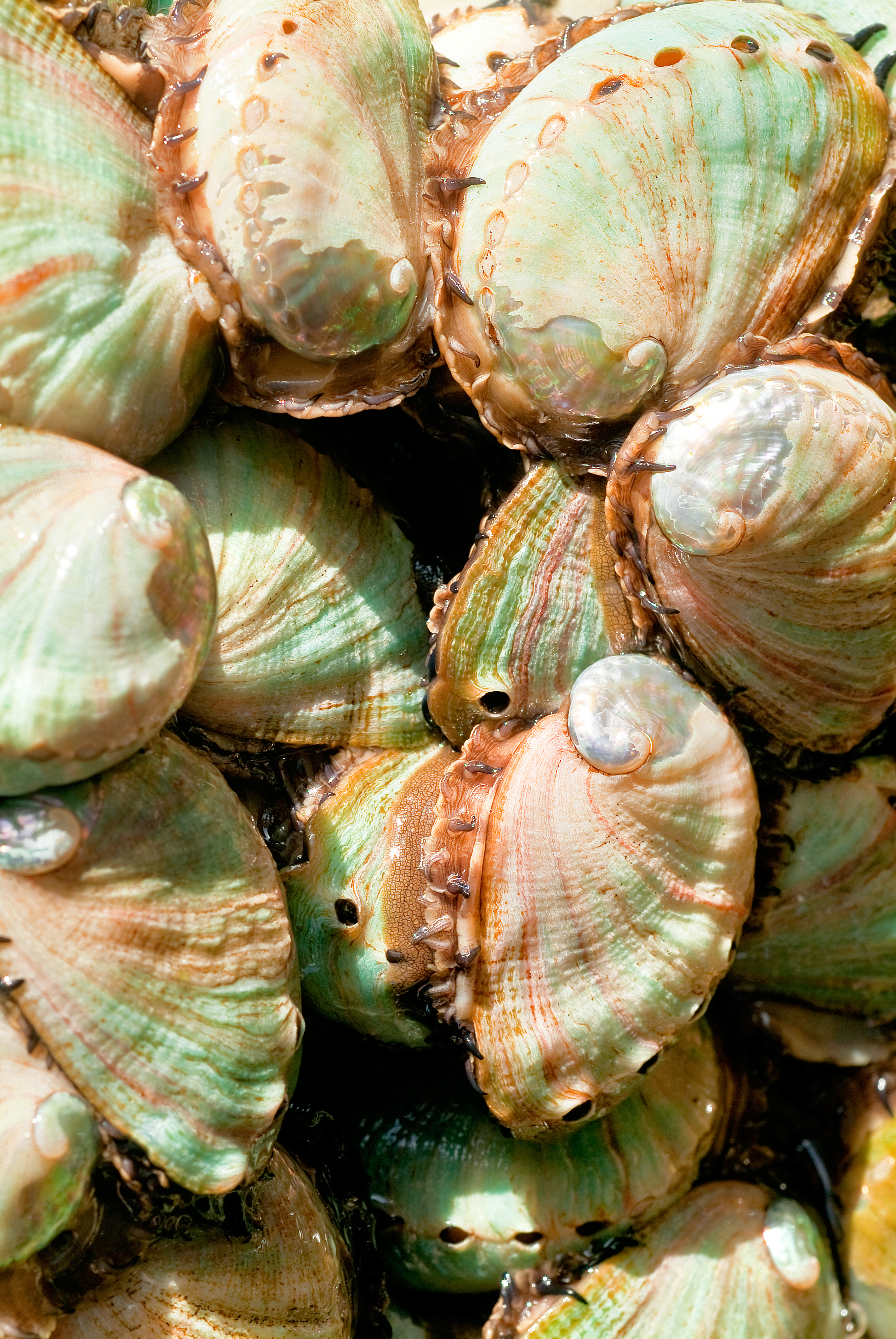Pink abalone
(Haliotis corrugata)

Description
The pink abalone, scientific name Haliotis corrugata, is a species of large edible sea snail, a marine gastropod mollusk in the family Haliotidae, the abalones. Pink abalones can be found along the Pacific coast of North America from Point Conception, California to Bahia de Santa Maria, Baja California Sur, Mexico. The shell is thick and characterized by strong corrugations and is more circular than other American abalones. The two to four open respiratory apertures have edges that are strongly elevated above the surface of the shell. These holes collectively make up the selenizone, which forms as the shell grows. The epipodium is a “ruffle” of tissue along the side of the foot. The head and epipodial tentacles are black, but the epipodial fringes are a mottled black and white, with many tubercles on the surface and a lacy edge. "The large shell is subcircular or short, oval, very convex, like a halfglobe. The surface is corrugated all over with nodose wrinkles. The three open perforations are elevated and tubular. The inner surface is dark, very brilliantly iridescent. The roughened muscle scar is distinct. The outline is more rounded than usual, being a very short oval. The back is very convex. The strong epidermis is dull,olive-brown with usually wide oblique greenish intervals. The sculpture begins as crowded spiral cords or lirae, but over the greater part of the body whorl these become nodose at short intervals, or are crossed by obliquely radiating corrugations. It is angled at the row of the holes. Below these there is a distinct spiral channel or furrow, bounded below by a more or less distinct row of nodules. And between this and the columellar margin it is obliquely corrugated. The folds scalloping the lower part of the columellar margin. The spire does not project above the general outline of the shell. The inner surface is dark, iridescent, with red predominating in the coloration. The muscle impression is large, distinct, roughened all over, and like fine mosaic work in its brilliant coloration. The flat or concave columellar plate slopes strongly inward, and is not at all truncate at the base. Above it, it almost conceals the small cavity of the spire. The large tubular perforations number sometimes two, but normally three." This species occupies sheltered waters at depths between 20 and 118 feet (6 – 36 m). They are herbivores, feeding on kelp and drifting algae.
Taxonomic tree:







